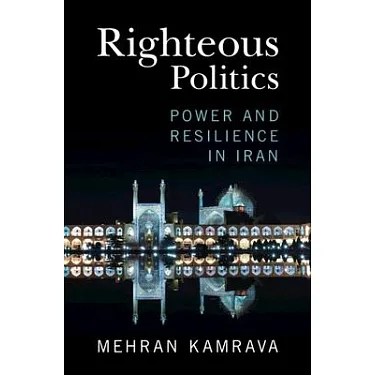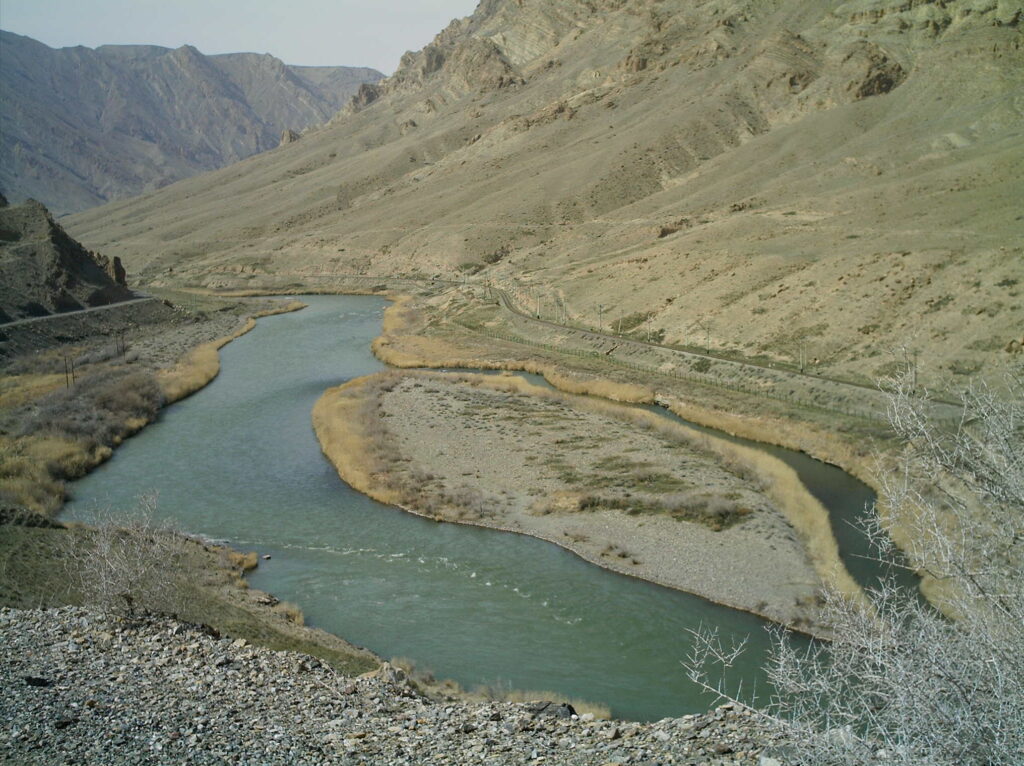Much of the literature on Iranian politics has identified the regime as a hybrid one, or what is termed “competitively authoritarian”, as opposed to “purely authoritarian”, rule. Mehran Kamrava’s book takes this scholarly debate further by accounting for the resilience of the Islamic Republic in the face of internal stresses and external pressures. Righteous Politics zeroes in on four inter-related categories of institutional development and domestic factors: (1) The institutional make-up and sources of legitimacy; (2) the state’s underbelly, or what Kamrava calls the “deep state”; (3) inter-elite dynamics, which facilitate the management of conflicts at home, and; (4) the state as a source of profitability and enabler of clientelism.
Drawing from extensive fieldwork and rare primary sources, Kamrava not only dissects Tehran’s legitimacy from within, but also reveals that institutions serve “safety-valve” functions. He posits that unelected bodies allow for elite rotation in recruitment, while elected ones provide an opening for popular venting. Such an arrangement explains the regime’s legitimacy as both Islamic and republican: Islamic because of Shia jurisprudence, and republican through notions of popular sovereignty and built-in electoral participation.
Additionally, the velayat-e-faqih system, or what is commonly known as rule by a Supreme Leader, revolves around a central personality but is far from “personalist”, Kamrava argues. Rather, it relies on a “highly differentiated and complex set of institutional arrangements”. Nevertheless, the presence of coercive institutions and the deep state (answerable only to the velayat-e-faqih) embodies ingredients of authoritarian rule that go as far as employing repression. Kamrava divides coercive institutions into what he calls “praetorians”, or enforcers of physical security, and institutions that offer political protection (namely the Guardian Council, the Expediency Council, and the judiciary).
With these forming the basis for his arguments, Kamrava examines the various institutional dimensions of the Islamic Republic. In tackling an eye-catching statement he makes in the introduction — that the Iranian state is its own “worst enemy” — Kamrava asserts that institutional design is partly responsible. Delving into elections and the Constitution, he says polls play a contradictory role, and the system “has not yet figured out how to accommodate and handle institutionalised political participation in the form of political parties”. While elections help establish political institutions, they are the reason disputes have erupted at the local, regional, and national levels. Later, he also casts a keen eye over various elected institutions, providing analysis of the widely-shared assessment that the system is moving towards the authoritarian end of the spectrum. The Islamic Consultative Assembly (generally referred to as the Majles) has witnessed, over the decades, a decline not only in the number of clerics, but also in the presence of reformist deputies, owing to the Guardian Council’s mass disqualifications.
Kamrava also explains the increasing securitisation of the Iranian regime. Physical security aspects are focused on the Islamic Revolutionary Guard Corps (IRGC), which is charged with “coup-proofing”, and has been increasingly called upon by the state to suppress political dissent, to the extent that it has “increased its politicisation and deepened its political influence”.
Other sharp insights are studded throughout the book, including his assertion that the Iranian economy is “nowhere near the collapsing basket case that Washington hawks claim it is”. Instead, Kamrava argues, clientelism has fostered “a modicum of successful development, and boosted agricultural and even industrial production”.
Overall, this is a valuable book that expertly dissects Iran’s institutional design. Crucially, it explains why Tehran is mired in paradoxes: Politically, it is at once dynamic and stifling; economically, it teeters between deficiency and progress. With the departure of Ayatollah Ali Khamenei imminent, important changes will follow. But, as Kamrava writes, “the actual succession itself is less important than the larger conduct of the state and its institutional makeup”. Structural problems matter, but so does the degree of resonance between leadership and society.
Image: Mehran Kamrava





